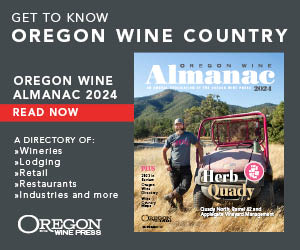New agritourism discussion deserves full public hearing
Allowing agritourism on smaller rural lots is a discussion that was unnecessary 20 years ago. But today it is.
Last week, the Yamhill County Planning Commission first considered expanding the local agritourism ordinance to rural residential zones. The existing ordinance, fashioned after Senate Bill 960, allows agricultural enterprises on lots zoned exclusive farm use, designated by a size exceeding 20 acres.
The initial reaction from some commissioners was a natural one: Expanding agritourism further can be viewed as a threat to Oregon’s protective land use system; masses of farmers all engaging in tourism activities may greatly increase traffic, impact livability in rural areas and create negative effects on farmland in general. So goes one argument.
The flip side of that coin will focus on the individual farmer struggling to turn a profit on a 10-acre lot. When Oregon land use laws were created, viable 10-acre farms were never in the discussion. Modern trends have led to smaller farms and community supported agriculture. When it comes to connecting people with the food they eat, is there still a major difference between a 20-acre farm and a 5- or 10-acre farm?
The Oregon State University Extension Service recently held two sessions of an Oregon Agritourism Summit, one last November and the second in March. The events brought together stakeholders to discuss all angles of related topics, including a theme on the importance of maintaining strong connections between people, farms and food.
That is one argument people in the wine industry used in advancing their agritourism industry. Sure, people like to taste wine, but they also want to see where the grapes are grown to sense a connection with what they are drinking.
Agritourism can provide hands-on education for urbanites, and further stresses the importance of locally-grown food. It would go a step beyond the farmers’ markets and farm-to-fork movement celebrated in our region. It also can provide an incentive to attract new entrepreneurial farmers in Oregon, where farms lag far behind Washington, Idaho and California in average net income.
Ultimately, there will be a finite answer to the question, “How much is too much?” But we encourage the discussion about how land use laws preserve, or hinder, the opportunity to farm today.
Small agricultural ventures were not part of the picture when those laws were put in place. Given the landscape of modern farming, however, the arguments for expanding agricultural agritouriam should be heard.









Comments